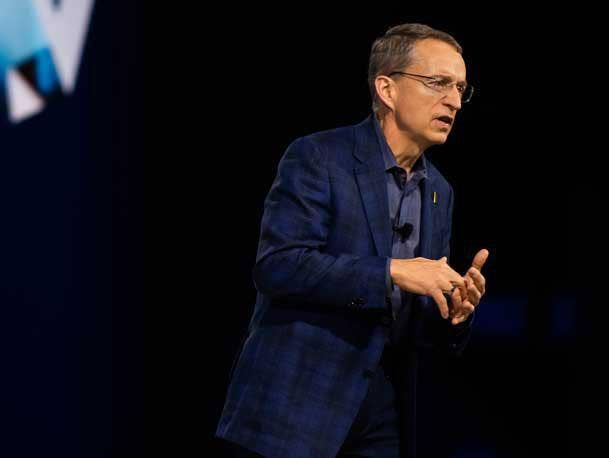$10B In Cuts: Intel CEO Pat Gelsinger Bemoans ‘Difficult Decisions’ Impacting ‘Loyal Intel Family’
‘In June, we were one of the first companies to highlight an abrupt and pronounced slowdown in demand, which has broadened beyond our initial expectations and is now having an industry-wide impact across the electronics supply chain,’ said Intel CEO Pat Gelsinger.

Intel CEO Pat Gelsinger Thursday laid out a “right sizing” plan to cut $3 billion in 2023 and as much as $10 billion in costs by 2025 in moves that he said will impact headcount.
“Inclusive in our efforts will be steps to optimize our headcount,” acknowledged Gelsinger in a conference call with Wall Street analysts. “These are difficult decisions affecting our loyal Intel family.” Intel has 121,100 employees.
In a conference call with analysts, Gelsinger said the “abrupt and pronounced slowdown in demand” that the chip giant highlighted in June has “broadened beyond our initial expecations and is now having an industry-wide impact across the electronics supply chain.”
[Related: Intel IDM 2.0 Part 2: Intel Creates Internal Foundry Model]
The cuts came with Intel announcing net income of $2.4 billion, a a 59 percent drop for its third fiscal quarter ended Oct. 1 compared with $5.9 billion in the year ago quarter. Intel reported a 15 percent drop in sales for the quarter to $15.3 billion compared with $18.1 billion in the year ago quarter.
Oregon Live, the web version of The Oregonian newspaper, reported last week that Gelsinger told employees via a video address that he would provide more details about the cutbacks on November 1. “These are always hard decisions, but our costs are too high and our margins are too low,” Gelsinger told employees in a video address, Oregon Live, said. We have to take actions to address them.”
With PC demand softening in consumer and education and OEM inventory adjustments impacting sales, Intel’s Client Computing Group sales were down 17 percent to $8.1 billion compared to $9.8 billion in the year ago quarter. Intel’s Client Computing Group’s operating income, meanwhile, plummeted 54 percent to $1.7 billion compared with $3.6 billion in the year ago quarter.
Intel’s Data Center Group fared even worse than the Client Computing Group with sales down 27 percent in the quarter to $4.2 billion compared with $5.8 billion in the year ago quarter. Operating income for the Data Center Group, meanwhile, dropped from $2.3 billion in the year ago quarter to zero.
One bright spot for the company was the Network and Edge Group which reported a 14 percent increase in sales to $2.3 billion led by strength in 5G, edge and ethernet products. Even with the double digit sales increase, the unit posted an 85 percent drop in operating income to $75 million compared with $511 million in the year ago period
Intel Chief Financial Officer David Zinsner said Intel remains focused on its long-term strategy even in the face of a possible global recession. “We are focused on embracing an internal foundry model to allow our manufacturing group and business units to be more agile, make better decisions and establish a leadership cost structure,” he said. “We remain committed to the strategy and long-term financial model communicated at our investor meeting.”
Kent Tibbils, vice president of marketing for Intel distributor ASI Corp. in Fremont, Calif., said the drop in revenue wasn’t unexpected. “We all know the market has been slowing down,” he said.
As far as layoffs are concerned, Tibbils said channel partners will be interested to learn specifics as “people are going to want to know how that affects them… does that mean a product or technology they’ve been working on is going to disappear? Does it mean an important contact you had at the company will no longer be there. It will be important for channel and distribution partners to see what that reduction will mean.”
Even with the slowdown that is hitting the market, Tibbils said Intel and the technology partners provide is “vital” to any and all businesses. “We’ve seen over the last quarters how important tech has become – it went from necessary to vital,” he said. “Those are good things for the channel overall. The channel is very flexible and very nimble and can adjust quickly.”
Bob Venero, CEO of Future Tech, Fort Lauderdale, Fla, No. 95 on the CRN 2022 Solution Provider 500, said he has great confidence in Intel CEO Pat Gelsinger’s IDM 2.0 turnaround plan.
“Pat Gelsinger knows what he’s doing, he’s making moves that are in the best interests of the stockholders and the company because of that Intel is going to come out on the other end of this in a much better position,” he said. “At the end of the day, Intel is a staple of most corporations infrastructure from the front end to the back end,” he said. “They are not going anywhere. If they did we’d have a much bigger problem than worrying about numbers. We would have to worry about how our companies would run and function without Intel.”
Venero said his Intel based sales are up 60 percent with pent up demand to replace aging infrastructure at companies from PCs to servers with Intel processors. “We do a tremendous amount of business with Intel, they are an incredible partner for us,” he said. “Sure they have been up and down based on the challenges globally, but so is everyone else. Intel always has a big target on its back because it is one of the biggest companies in the industry.”
Gelsinger, for his part, a one time 30 year Intel veteran who returned to take the CEO role in January 2022 with an ambitious turnaround plan, said he knows Intel has a “lot of work to do” to deliver on what he calls the company’s IDM 2.0 flywheel strategy for the “digital future.”